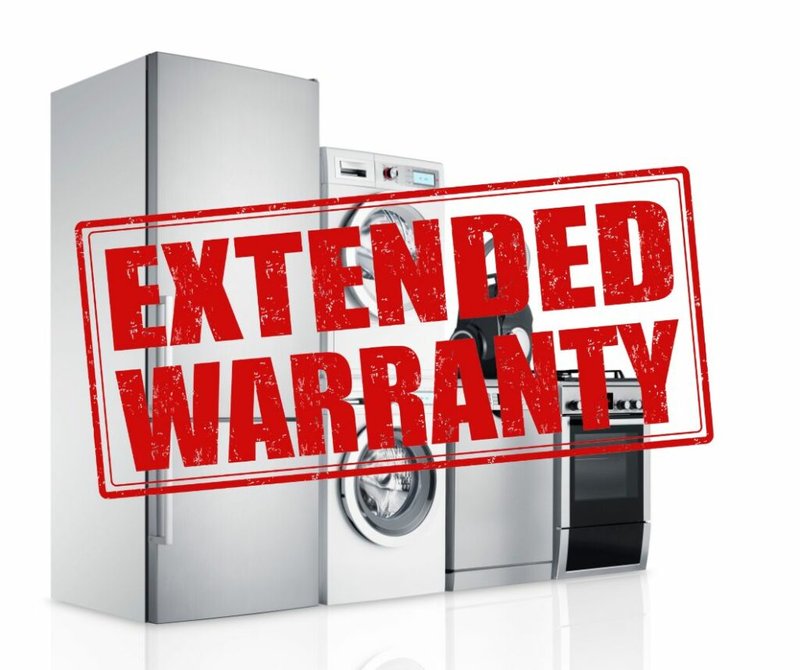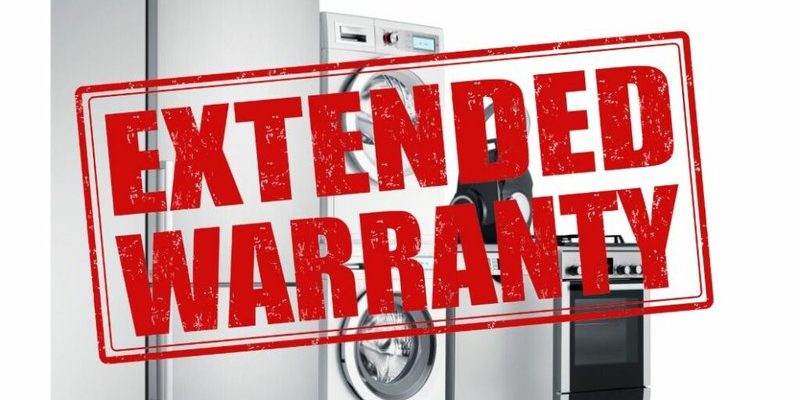
Honestly, sorting through the world of warranties can feel like trying to decode a secret recipe—sometimes the ingredients aren’t clear, and you’re left wondering if the final result is even worth it. For KitchenAid appliances, known for their sturdiness and style, deciding whether to invest in an extended warranty can leave you second-guessing. Is it overkill for a brand that people swear by, or is skipping protection just tempting fate? Let’s break this down, coffee-in-hand style, so you can make a decision that feels just right for your kitchen and your wallet.
What Is an Extended Warranty for KitchenAid Appliances?
Let me explain this in plain terms. An extended warranty is a service agreement you can buy (usually at checkout) that promises to repair or replace your KitchenAid appliance if something goes wrong after the original warranty ends. KitchenAid’s standard warranty typically covers defects in materials or workmanship for a year. Once that’s over, you’re on your own—unless you’ve got an extended warranty.
Think of it like pay-as-you-go insurance for your mixer, fridge, or dishwasher. If your appliance malfunctions due to a covered issue (like a motor giving out), the warranty company steps in to handle the bill for parts, labor, or sometimes even full replacement. It’s the kitchen equivalent of a safety net—nice to have, but you hope you never need it.
You’ll find these plans offered both by KitchenAid directly and through big retailers. The details may include coverage for things like troubleshooting electrical issues, replacing worn-out parts, or resetting a quirky control panel. Each plan has its own code of what’s included or excluded, so reading the fine print is key.
The real question: are these plans a smart buy, or just another way to squeeze a few more bucks out of a purchase? Let’s keep digging.
How Does the Standard KitchenAid Warranty Work?
Before you decide on extra coverage, it helps to understand what you already get. When you buy a KitchenAid appliance, you typically get a one-year limited warranty. This means, for the first year, KitchenAid will cover the cost of fixing or replacing your appliance if it breaks due to defects in materials or craftsmanship.
Here’s the thing: this coverage won’t help if you accidentally drop your stand mixer, run your blender without the lid, or let your dishwasher battery (joking—it doesn’t have one!) run out. It’s all about problems that are KitchenAid’s fault, not your own.
For most folks, this first year is a kind of trial period. If you’re going to experience issues like weird codes, problems syncing with smart home tech, or parts that just won’t pair up correctly, it usually happens in those first 12 months. After that, you’re in charge of any repairs—unless you bought an extended warranty.
So, think about how much you trust the initial quality. Do you tend to have good luck, or are you the person whose brand-new gadgets always need troubleshooting? This experience might shape whether the standard warranty feels like enough.
What Does an Extended Warranty Actually Cover?
You might be wondering—what’s inside these extended warranty agreements? In most cases, an extended warranty for KitchenAid appliances will cover:
- Repair or replacement of mechanical and electrical failures (after the standard warranty ends).
- Labor and parts involved in covered repairs.
- Some plans even offer perks like free troubleshooting calls, annual maintenance checkups, or “battery” replacement for small electric items.
- Coverage for common problems—motors that burn out, wiring that needs a code reset, or electronic boards that fail to sync.
Here’s where it gets tricky: not everything is included. Most plans don’t cover accidental damage, cosmetic issues, or normal wear and tear (scratches, dents, faded paint). There are also usually exclusions for things like water damage or misuse—so if you’re hoping the plan will cover a stand mixer dropped from counter height, you’re probably out of luck.
Some warranties are pretty generous, while others are full of hoops to jump through—like coverage only kicking in if you regularly “service” the appliance, or limits on the value of repairs compared to what you paid. Always check if you need approval before getting repairs, or if they’ll send a technician out (or just reimburse you). It can feel like troubleshooting a remote that refuses to pair—sometimes straightforward, sometimes not.
How Reliable Are KitchenAid Appliances, Really?
Now let’s talk about kitchen legend versus reality. KitchenAid has a reputation for making solid, long-lasting appliances. Many people say their stand mixer is still going strong after decades of batter and bread dough. But like any brand, not every product is bulletproof.
There’s a big range. Some KitchenAid models (especially the classic stand mixers) are built like tanks and rarely need more than a reset or a bit of maintenance. Others, like high-tech dishwashers or fridges loaded with smart features, can have more moving parts—and more things that can go wrong, from error codes to sync issues with Wi-Fi.
Here’s a tiny story: a close friend of mine bought a KitchenAid refrigerator, and it worked perfectly until, just after the first year, the water dispenser stopped working. The repair would’ve cost half as much as the fridge itself. If she’d had an extended warranty, that would’ve been covered.
Still, most folks won’t need major repairs in the first few years. Appliances that need constant troubleshooting or can’t hold a charge (if we’re talking about blenders or food processors) are generally rare, but not impossible. Your risk really depends on the specific model, how often you use it, and just plain luck.
Do Extended Warranties Save Money in the Long Run?
Let’s get honest: the math here isn’t always obvious. An extended warranty for a KitchenAid appliance might cost anywhere from $50 to $250, depending on what you’re covering and for how long. That’s a decent chunk of change—especially if you never end up using it.
Statistically, most people never use their extended warranty. But if something expensive breaks—a motor burns out or a digital control panel fails to reset—the repair cost can easily be more than the warranty price. In that situation, you come out ahead.
What about the odds? If you’re buying a lower-tech appliance, like a stand mixer or toaster, repairs are usually cheap enough to pay out of pocket. For high-end fridges, stoves with fancy touchscreens, or anything with smart “pair” and “sync” features (think Wi-Fi dishwashers), repair bills can climb quickly. In those cases, a warranty can give you peace of mind—and that’s worth something too.
So, it comes down to your risk tolerance. Are you comfortable DIY-ing small repairs and troubleshooting? Or do you want zero stress if something codes out or needs a battery swap? There isn’t one right answer, just the one that feels right for your anxiety (and your bank account).
Alternatives to Buying an Extended Warranty
There’s always more than one way to slice a cake. If you’re not thrilled about shelling out for an extended warranty on your KitchenAid, here are some other routes to consider:
- Some credit cards automatically double the manufacturer’s warranty when you use them to buy appliances—no need for extra plans.
- Set aside a small “self-insurance” fund. If you’d spend $100 on a warranty, sock that away and use it if a repair pops up. If not, enjoy your “bonus” later.
- Certain home insurance plans or appliance protection bundles might cover major kitchen breakdowns for less than individual extended warranties would cost.
- If you’re handy, basic repairs on many KitchenAid products can be managed with just a little troubleshooting and a few YouTube tutorials.
Sometimes, skipping the warranty just means being prepared: knowing how to reset your appliance, finding reliable service codes, or replacing a small part yourself instead of calling the pros.
But for people who hate surprises or want absolute peace of mind (especially if the appliance is mission-critical, like a fridge), the extended warranty can be a sanity-saver.
What’s the Claim Process Like?
If there’s one place extended warranties can be a pain, it’s the claims process. Here’s how it typically works for KitchenAid appliances:
- You notice a problem—say, your mixer won’t turn on, or your dishwasher flashes a mysterious code and refuses to sync up.
- You contact the warranty provider (KitchenAid or a third party) and share the details. Proof of purchase is usually required.
- The service team may try some basic troubleshooting over the phone: reset instructions, checking the power, or pairing the remote control if it’s a smart device.
- If that doesn’t work, they’ll send a technician or mail a shipping label for a repair center.
Sometimes, claims are smooth and quick. Other times, delays, exclusions, or “fine print” can slow things down. Losing your receipt, missing regular maintenance, or waiting for parts can all be hurdles. This is why knowing the ins and outs of your plan is so important. A good extended warranty should feel like a trusty sidekick—not another kitchen headache.
Should You Buy an Extended Warranty for KitchenAid Appliances?
This is the big question, right? Here’s the bottom line: extended warranties aren’t a must for everyone, but they do suit certain buyers and situations.
When it makes sense:
- You’re buying a high-end, high-tech, or heavily used KitchenAid appliance—like a smart fridge, double oven, or commercial-grade mixer.
- You’re risk-averse and want the extra peace of mind, no matter what.
- You find a reasonably priced warranty (or one with extra perks like free troubleshooting or annual maintenance).
- You’ve had bad luck with appliances in the past, or repairs in your area are costly or hard to arrange.
When it might not be worth it:
- You’re buying a basic or proven reliable model that’s cheap to repair or replace.
- Your credit card or home insurance already gives you some coverage.
- You’re handy with simple repairs and not afraid to troubleshoot or reset things yourself.
- The plan is expensive, full of exclusions, or too much hassle to claim.
Here’s my two cents: For most KitchenAid kitchen appliances, especially the old-school, less fussy ones, skipping the extended warranty is often the simpler call. But if you’re dropping big money on a smart fridge or you just want to sleep easy, a solid plan can absolutely be worth it.
Your kitchen, your call—just make it an informed one.
Wrapping Up: Making the Smart Kitchen Call
Choosing whether to buy an extended warranty for your KitchenAid appliance isn’t just about risk—it’s about what makes you feel comfortable in your own home. Some folks want every safety net available; others are happy to roll the dice and handle repairs if and when they come up.
If you’re someone who loves having a backup plan, enjoys extra perks, or knows you’ll lose sleep over “what-ifs,” the extra investment can bring real peace of mind. On the other hand, if you’re confident in KitchenAid’s reliability and prefer to keep things simple, skipping the add-on may leave more dough in your pocket—and that’s always nice, too.
No matter what you choose, the most important thing is to know exactly what you’re paying for. Read the details, trust your gut, and think about what fits your kitchen and your lifestyle. In the end, your appliances should make life easier—not add extra stress. Here’s to many happy (and hopefully hassle-free) years with your KitchenAid gear.
